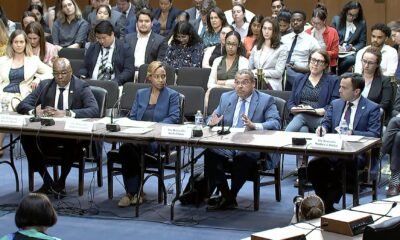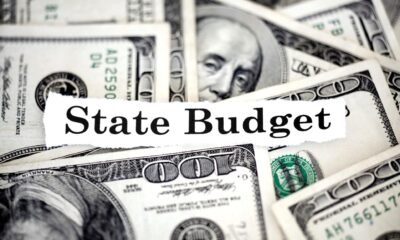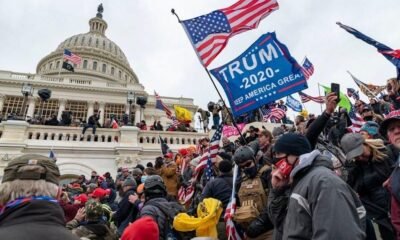Business
Trump Halts Tariffs for 90 Days Amid Intensifying Global Trade War

In a surprising move amid an escalating global trade conflict, U.S. President Donald Trump announced a 90-day suspension of numerous tariffs on Wednesday. This decision was coupled with a reduction in most import duties, yet Trump heightened tensions further by increasing tariffs on Chinese goods.
The announcement provided a momentary reprieve for U.S. financial markets, which faced significant turmoil as investors moved away from American assets. Trump’s administration portrayed the pause as a success, claiming that their aggressive tariff strategy prompted other nations to renegotiate trade agreements with the U.S.
Despite the temporary halt, concerns lingered over possible escalations. Trump emphasized that many goods worldwide would still incur a 10% tariff when the suspension concludes. He made these remarks via a post on Truth Social, his social media platform.
Prior to Trump’s announcement, the trade war had intensified, with both the European Union and China implementing new tariffs on American products. After a contentious day, the U.S. president raised tariffs on Chinese goods to 125%, following Beijing’s response to his earlier increases, which saw duties soar to 84%.
The EU responded similarly, imposing tariffs of between 15% and 25% on a range of American goods, including cigarettes and motorcycles, as retaliation against earlier U.S. tariffs on steel and aluminum. This reciprocal trade skirmish has heightened investor anxiety, leading to a pronounced sell-off in U.S. government bonds—a traditional safe haven during market instability.
Late Tuesday into Wednesday, U.S. Treasury bonds, valued around $28 trillion, experienced significant sell-offs, indicating growing investor uncertainty. However, by Wednesday afternoon, trading activity in government bonds had stabilized.
Trump remained optimistic, asserting on Truth Social that his policies would ultimately lead to a stronger U.S. economy. He expressed confidence that the U.S., China, and the EU—three of the world’s largest markets—could navigate the challenges without sparking a global recession.
Despite the risks associated with the trade dispute, experts warn that both China and the EU could suffer substantial losses due to their reliance on exports to the U.S. The tariffs announced by the EU target various American products, including soybeans and clothing, which analysts believe are less severe than anticipated.
Prior to Trump’s latest announcements, the EU was engaged in critical discussions regarding its response to the president’s proposed tariffs. Strategies under consideration included possible actions against major American tech firms, which could provoke retaliatory measures from Trump.
The economic relationship between the EU and the U.S. stands as the largest globally, valued at approximately 1.5 trillion euros ($1.55 trillion) in 2023, when goods and services are combined. The EU exports significantly more to the U.S. than it imports, resulting in a trade surplus of around $235.6 billion for the EU in 2024.
U.S. trade deficits, however, have reportedly narrowed. In 2023, it stood at $125 billion once services were factored in, yielding a surplus of $76.5 billion in services sold to the EU. Furthermore, mutual investments between European and American firms exceed $5 trillion, illustrating the interconnected nature of both economies.
The International Monetary Fund has cautioned that a trade war between the U.S. and the EU could potentially reduce global GDP by up to 7%, reflecting the vast volume of commerce traversing the Atlantic.


















